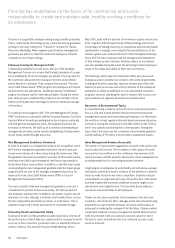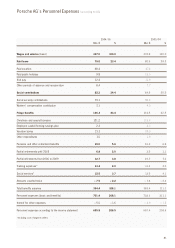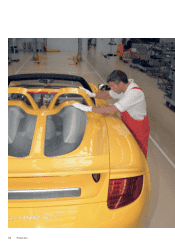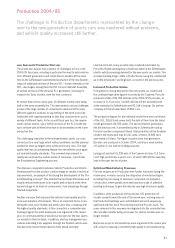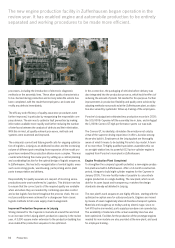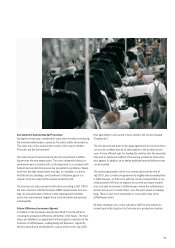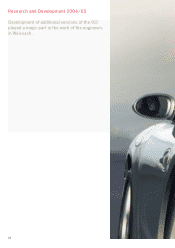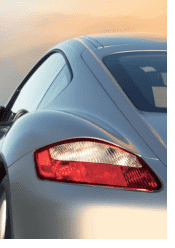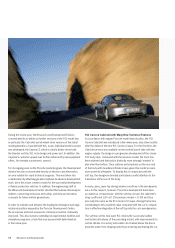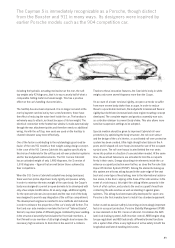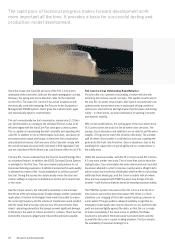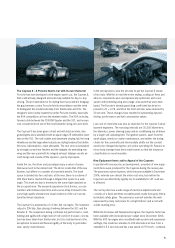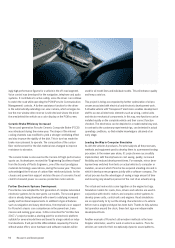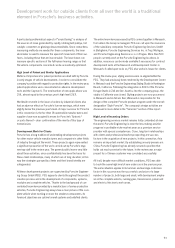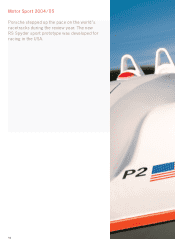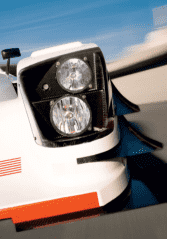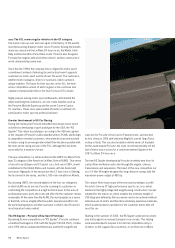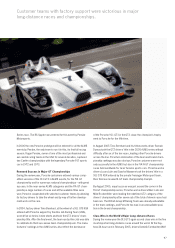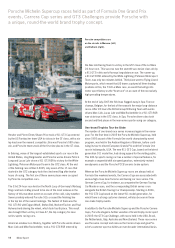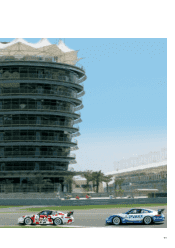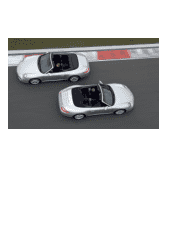Porsche 2004 Annual Report Download - page 94
Download and view the complete annual report
Please find page 94 of the 2004 Porsche annual report below. You can navigate through the pages in the report by either clicking on the pages listed below, or by using the keyword search tool below to find specific information within the annual report.
The rapid pace of technical progress makes forward development work
more important all the time. It provides a basis for successful testing and
production-model development.
Research and Development90
Since the Coupe and Cabriolet versions of the 911 Carrera were
developed at the same time, both use the same running-gear concept.
However, the spring and shock absorber rates for the Cabriolet
are less firm. The open 911 Carrera S has active suspension with
electronically controlled damping, the Porsche Active Suspension
Management (PASM) system, which gives the Cabriolet safe, agile
and impressively dynamic road behavior.
The car’s exceptionally low fuel consumption, namely only 11.2 liters
per 100 kilometers according to the standard EU test, is due to its
efficient engine with the VarioCam Plus valve gear control system.
This is capable of repositioning the inlet camshafts and adjusting inlet
valve lift. In addition to more refined engine operation, and above all
increased power output and torque, it minimizes fuel consumption
and pollutant emissions. Both versions of the Cabriolet comply with
the overall exhaust emission limits laid down in EU4 legislation EU4
and are classified in North America as Low Emission Vehicles (LEV II).
The new 911 Carrera Cabriolet has the Porsche Sound Package Plus
as a standard feature. In addition, the BOSE Surround Sound System
is available for the first time. This uses twelve loudspeakers for an
impressive listening experience. A definite improvement in audio quality
is obtained by means of the “sound adaptation to soft top position”
function. During the journey this automatically varies the tone and
volume settings in response to disturbance factors such as wind roar
or tire noise.
Like the Coupe version, the Cabriolet’s ownership costs are lower
than those of the preceding model. Design changes and the systematic
application of modern technologies have made it possible to reduce
the servicing frequency and the volume of maintenance work needed,
with the result that servicing costs are now 26 percent lower. New
impact-absorbing elements in the bumper prevent significant damage
to the body in the event of a minor accident or collision. This in turn has
lowered the insurance category and reduced the premiums payable.
911 Carrera 4 has Outstanding Road Behavior
Porsche offers its customers fascinating, emotive vehicles with
extremely harmonious overall concepts. This applies in particular to
the new 911 all-wheel-drive models: their typical characteristics are
optimal power transmission even in unpleasant driving conditions
and on poor road surfaces and high levels of performance and driving
safety – in other words, an ideal combination of sporting character
and dynamic stability.
With certain modifications, the running gear of the rear-wheel-drive
911 Carrera forms the basis for the all-wheel-drive versions. The
springs, shock absorbers and stabilizers are re-rated to suit the extra
weight (+55 kg) and to match the driveline effectively. The variable-
split all-wheel-drive system is controlled by a viscous coupling inte-
grated into the front-axle final drive. Even in situations close to the
handling limit, it gives the car great agility with no compromises in
the safety area.
Unlike the previous models, both the 911 Carrera 4 and 911 Carrera
4 S now have a wider rear body. This is more than just an attractive
styling feature: it accommodates the wider wheels and rear track that
have been adopted in order to improve road dynamics. Weight distri-
bution is also more uniformly distributed, with the effect of providing
additional front wheel grip, and the Carrera models with all-wheel-
drive are now equipped with PSM Plus and a new design of brake
booster – both technical features aimed at ensuring maximum safety.
The PSM Plus system now used on the 911 Carrera 4 for the first
time has two special functions that support the driver in critical
situations: pre-charging of the brake system builds up pressure as
a precaution if the gas pedal is released suddenly (a sign that an
emergency brake application may be about to occur), and the brake
pads are pressed lightly against the disks, so that the car is ready
to brake immediately if the need arises. In addition, the Brake
Assistant is activated if the brake pedal is pressed down violently
as would be the case in a panic braking situation. This too ensures
the availability of maximum braking force.


